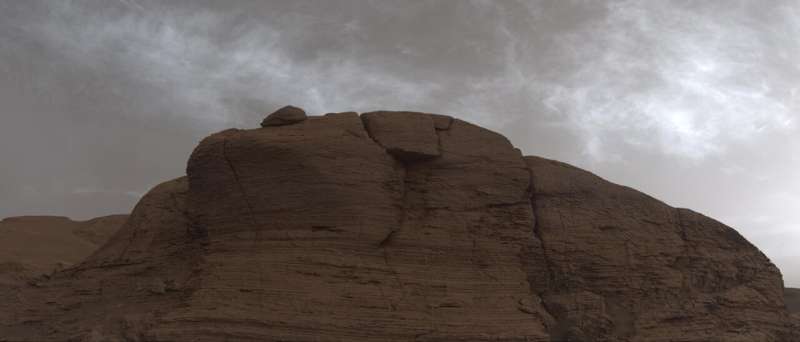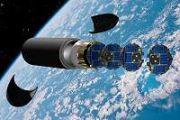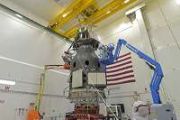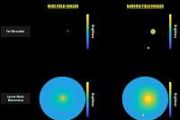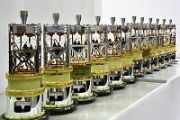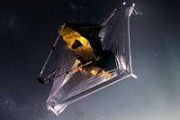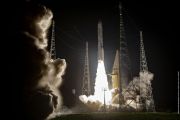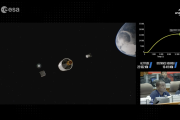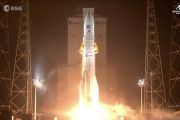
Copernical Team
ASU astronomer finds star fuel surrounding galaxies
 Most galaxies, including our own, grow by accumulating new material and turning them into stars - that much is known. What has been unknown is where that new material comes from and how it flows into galaxies to create stars.
In a recently published study, Arizona State University astronomer Sanchayeeta Borthakur has identified the faint fuel reservoirs that surround galaxies, and how this
Most galaxies, including our own, grow by accumulating new material and turning them into stars - that much is known. What has been unknown is where that new material comes from and how it flows into galaxies to create stars.
In a recently published study, Arizona State University astronomer Sanchayeeta Borthakur has identified the faint fuel reservoirs that surround galaxies, and how this NASA's James Webb telescope completes mirror alignment, heads for orbit
 NASA's James Webb telescope completed alignment all 18 of its primary mirror segments and the secondary mirror on Wednesday, the agency reported.
NASA Administrator Bill Nelson shared the news, tipping his hat to the crew on Twitter.
"Congratulations to the teams that have been working tirelessly since launch to get to this point. Soon, Webb will arrive at its new home, L2," wrot
NASA's James Webb telescope completed alignment all 18 of its primary mirror segments and the secondary mirror on Wednesday, the agency reported.
NASA Administrator Bill Nelson shared the news, tipping his hat to the crew on Twitter.
"Congratulations to the teams that have been working tirelessly since launch to get to this point. Soon, Webb will arrive at its new home, L2," wrot SwRI scientist uncovers evidence for an internal ocean in small Saturn moon
 A Southwest Research Institute scientist set out to prove that the tiny, innermost moon of Saturn was a frozen inert satellite and instead discovered compelling evidence that Mimas has a liquid internal ocean. In the waning days of NASA's Cassini mission, the spacecraft identified a curious libration, or oscillation, in the moon's rotation, which often points to a geologically active body able t
A Southwest Research Institute scientist set out to prove that the tiny, innermost moon of Saturn was a frozen inert satellite and instead discovered compelling evidence that Mimas has a liquid internal ocean. In the waning days of NASA's Cassini mission, the spacecraft identified a curious libration, or oscillation, in the moon's rotation, which often points to a geologically active body able t Hubble Finds a Black Hole Igniting Star Formation in a Dwarf Galaxy
 Often portrayed as destructive monsters that hold light captive, black holes take on a less villainous role in the latest research from NASA's Hubble Space Telescope. A black hole at the heart of the dwarf galaxy Henize 2-10 is creating stars rather than gobbling them up. The black hole is apparently contributing to the firestorm of new star formation taking place in the galaxy. The dwarf galaxy
Often portrayed as destructive monsters that hold light captive, black holes take on a less villainous role in the latest research from NASA's Hubble Space Telescope. A black hole at the heart of the dwarf galaxy Henize 2-10 is creating stars rather than gobbling them up. The black hole is apparently contributing to the firestorm of new star formation taking place in the galaxy. The dwarf galaxy Sol 3361: Keeping the Dog Leashed
 Our initial plan was to conduct a MAHLI "dog's eye" imaging sequence on the beautiful Panari outcrop that we are parked before.
During a dog's eye sequence, the rover's arm walks the MAHLI camera along a feature near ground level, just how your martian canine (obviously named "Rover") would see it. But, we had to move that to tomorrow's plan due to a couple issues that need resolving first
Our initial plan was to conduct a MAHLI "dog's eye" imaging sequence on the beautiful Panari outcrop that we are parked before.
During a dog's eye sequence, the rover's arm walks the MAHLI camera along a feature near ground level, just how your martian canine (obviously named "Rover") would see it. But, we had to move that to tomorrow's plan due to a couple issues that need resolving first Cosmonauts complete first spacewalk of 2022 to prepare Russian ISS segment
 Two Russian cosmonauts completed the first spacewalk of 2022 outside the International Space Station to perform tasks that will allow spacecraft to dock with a new Russian segment.
Anton Shkaplerov and Pyotr Dubrov, of the Russian space agency Roscosmos, spent seven hours, 11 minutes outside the space station after exiting just after 7 a.m. EST.
The pair installed handrails, ante
Two Russian cosmonauts completed the first spacewalk of 2022 outside the International Space Station to perform tasks that will allow spacecraft to dock with a new Russian segment.
Anton Shkaplerov and Pyotr Dubrov, of the Russian space agency Roscosmos, spent seven hours, 11 minutes outside the space station after exiting just after 7 a.m. EST.
The pair installed handrails, ante Russian cosmonauts conduct EVA to complete Nauka Lab Module integration to ISS
 Russia launched the multipurpose laboratory module "Nauka" from the Baikonur cosmodrome on 21 July and it docked at the ISS on 29 July.
Watch a live broadcast from the International Space Station (ISS) as Roscosmos astronauts Anton Shkaplerov and Pyotr Dubrov are performing a spacewalk to integrate the Nauka multipurpose laboratory module into the Russian segment of the ISS.
The modu
Russia launched the multipurpose laboratory module "Nauka" from the Baikonur cosmodrome on 21 July and it docked at the ISS on 29 July.
Watch a live broadcast from the International Space Station (ISS) as Roscosmos astronauts Anton Shkaplerov and Pyotr Dubrov are performing a spacewalk to integrate the Nauka multipurpose laboratory module into the Russian segment of the ISS.
The modu Grounded: First Flight Delay Due to Inclement Weather on Another World
 The atmosphere of Mars is much less dense than Earth's; however, the Mars climate shares many similarities to Earth: seasons, changing winds, ice clouds, and dust storms, among others. Predicting weather events, as is true for Earth, is always an uncertain endeavor. In preparing for Flight 19, we found out that unexpected Mars weather can result in a familiar and unfortunate scenario here on Ear
The atmosphere of Mars is much less dense than Earth's; however, the Mars climate shares many similarities to Earth: seasons, changing winds, ice clouds, and dust storms, among others. Predicting weather events, as is true for Earth, is always an uncertain endeavor. In preparing for Flight 19, we found out that unexpected Mars weather can result in a familiar and unfortunate scenario here on Ear One Year into the Biden Administration, NASA Looks to Future
 Over the past year, NASA has made valuable contributions to Biden-Harris Administration’s goals – leading on the global stage, addressing the urgent issue of climate change, creating high paying jobs, and inspiring future generations.
Over the past year, NASA has made valuable contributions to Biden-Harris Administration’s goals – leading on the global stage, addressing the urgent issue of climate change, creating high paying jobs, and inspiring future generations. NASA's Curiosity rover measures intriguing carbon signature on Mars
